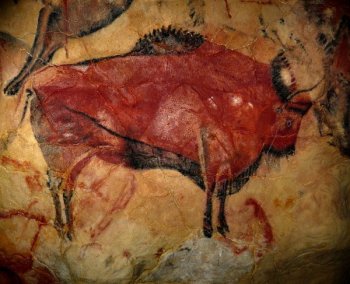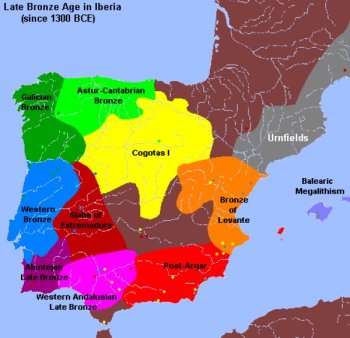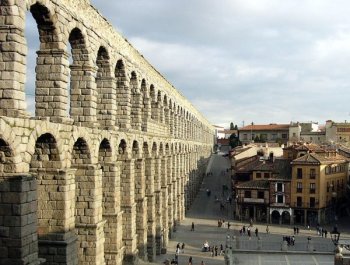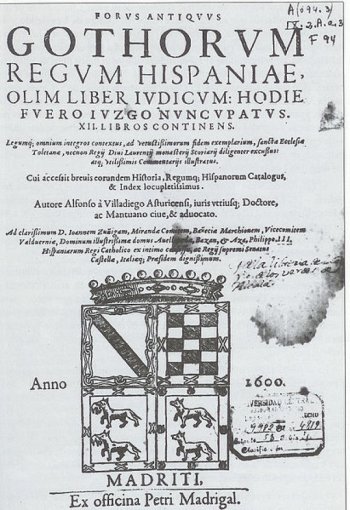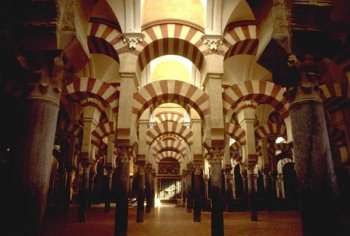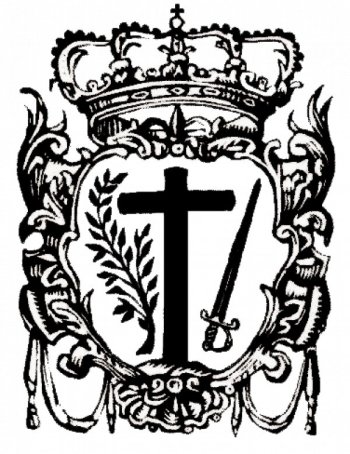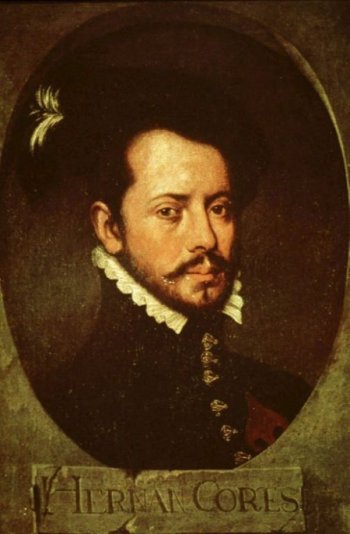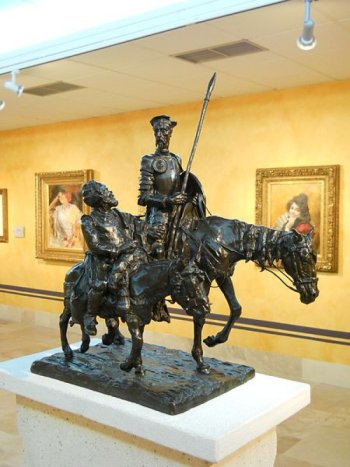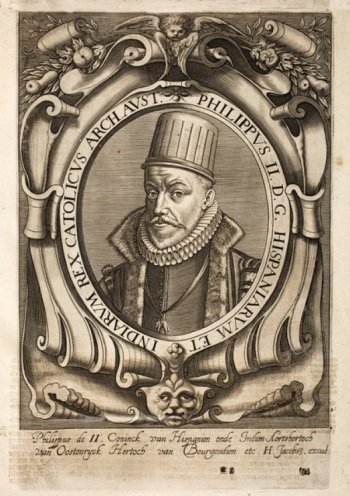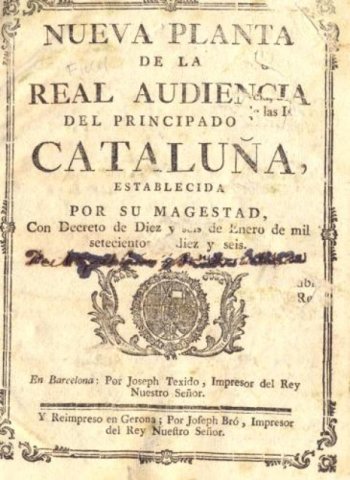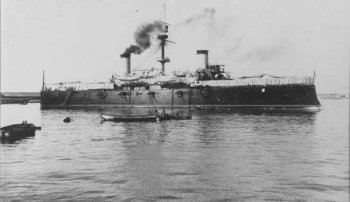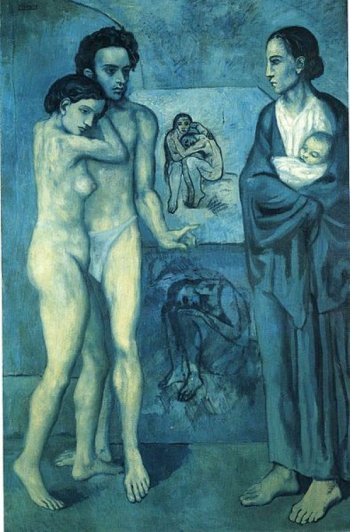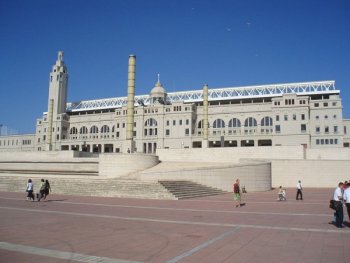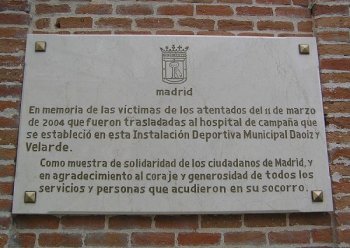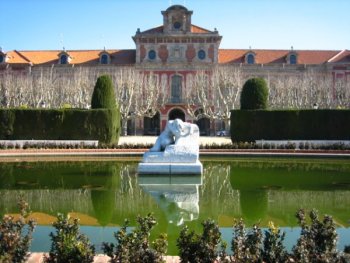History: Historical Timeline
Ancient History
| Date | Event |
|---|---|
| 1,398,000 BCE | Early hominids occupy the Iberian Peninsula, in what are later called the Atapuerca Mountains of northern Spain. |
| 200,000 BCE | Neanderthals occupy the Iberian Peninsula. |
| c. 30,000 BCE | Small groups of Cro-Magnon humans inhabit the Iberian Peninsula. They live in caves and hunt or gather their food. |
| 15,000 BCE | Settlers create cave paintings in what later is called the cave of Altamira. |
| 4000 BCE | Neolithic cultures expand into the Iberian Peninsula, building impressive megalithic structures. |
| 3000 BCE | The Copper Age begins in the Iberian Peninsula. Many cultures in this area forge and work copper, and have extensive trade networks reaching as far as the Baltics, North Africa, and the Middle East. |
| 1800 BCE | The Bronze Age begins in the Iberian Peninsula. During this time, Phoenician-influenced cultures settle in the area later known as Andalusia, and Celtic cultures first occupy the northwestern areas of the peninsula. |
| 1100 BCE | Phoenician traders found the merchant colony of Gadir. |
| 900–700 BCE | An extremely diverse variety of people settle in Spain, including Celtics, Phoenicians, Greeks, and Carthaginians. The Greeks name a local river the Iber, and it becomes the basis of the area's name, Iberia. |
Roman Era
| Date | Event |
|---|---|
| 218 BCE | Romans first annex the Iberian Peninsula as the Province of Hispania during the Second Punic War. Hispania becomes an important part of the Roman Empire, and Roman culture gradually comes to dominate the earlier Celtic, Greek, and Phoenician cultures. Leaders at the local level are permitted into the Roman aristocracy, and several prominent philosophers, poets, and even Emperors are born and raised in Hispania. The province is an important exporter of wine, olive oil, and metal throughout the Empire. |
| 409–415 CE | The Roman Empire gradually loses control of Hispania. Groups of Germanic tribes including the Suebi, Buri, and Vandals fill the power vacuum in the area, followed by the Visigoths. Several new kingdoms are established during this time, including the Vandal Kingdom of Vandalusia, which would later become known as Andalusia. |
Medieval Era
| Date | Event |
|---|---|
| 418–711 | The Visigoths gain control of the province of Hispania and manage to establish and maintain a kingdom there for several centuries, despite Roman and Byzantine attempts to regain control. More culturally Roman than many of the other local tribes, the Visigoths are responsible for preserving Latin as the dominant language in the area; their version of the language later gives rise to Spanish. |
| 589 | The Visigoths convert to Catholicism, spreading Christianity in the area. |
| 654 | Visigoth kings establish the Liber Iudiciorum, which forms the basis for law in the region well into the Middle Ages. |
| 711 | April 30. Islamic military leader Tariq ibn-Zyad arrives at Gibraltar and begins a campaign to conquer the Iberian Peninsula. He defeats Visigoth King Roderick at the Battle of Gaudalete, after which most of Iberia comes under his control. |
| 711–1492 | Tariq ibn-Zyad establishes the Kingdom of Al-Andalus, introducing a period of extended Muslim rule. The kingdom is constantly under threat from Christian rivals who see it as their religious mission to defeat the Muslims, and boundaries change frequently as various parts of the kingdom come under Christian rule. The kingdoms of Navarre, Castile, Aragon, and Portugal are carved out of Muslim territory after a succession of Christian victories, especially in the 12th century. |
| 1492 | January 2. Emir Muhammad XII surrenders to the Catholic forces of Queen Isabella I, ending Muslim rule in Spain. July 30. After centuries of violence and discrimination against Spain's Jewish population, Catholic monarchs issue a proclamation forcing all Spanish Jews to convert to Catholicism or leave the country. Between 40,000 and 120,000 Jews are expelled. August 3. Christopher Columbus departs on a voyage attempting to reach the Indies by sailing west. Instead, he reaches the Americas, becoming the first known European to land there since Viking voyages centuries earlier. Columbus claims vast wealth and resources in the name of Spain, making the country a significant global power for the next 200 years and fueling a period of colonial expansion that will bring vast areas of South and Central America under Spanish control. Antonio de Nebrija publishes Gramática de la lengua castellana (Grammar of the Castilian Language). It is the first grammar published for a Western language. |
Habsburg Dynasty
| Date | Event |
|---|---|
| 1500–1600 | The Spanish Renaissance. Spain becomes one of the largest and most dominant world powers, and art, literature, and the sciences flourish. Its success is fueled by wealth sent back from its conquests in Central and South America, the Bahamas, and other areas. |
| 1516 | Charles I, Spain's first Habsburg King, is crowned. He later becomes Holy Roman Emperor Charles V and rules until 1556. Spain remains largely Catholic during Charles' reign, despite the Protestant revolutions occurring in various areas of Europe. |
| 1518–1521 | The Spanish conquistador Hernán Cortés overthrows the Aztec Empire, his troops slaughtering thousands of unarmed people during his attack on Tenochtitlan. The Emperor Montezuma dies on July 1, 1520; Cortés claims his own people stoned him to death, but others report that the Spanish killed him. Cortés claims Mexico as a Spanish territory and rules until 1524. Extensive amounts of gold are mined in Mexico and sent back to Spain. |
| 1532–1533 | Francisco Pizarro, a cousin of Hernán Cortés, defeats the Inca Empire and claims Peru for Spain. Pizarro captures the Incan Emperor Atahualpa and demands that he fill a room measuring 7 by 5 meters (22 by 17 feet) with gold and two other rooms with silver to secure his own release. Atahualpa does this, but Pizarro orders his execution anyway on grounds that include plotting against Spanish forces. |
| 1541–1614 | El Greco, a prominent painter, architect, and sculptor of the Spanish Renaissance, is born. His groundbreaking artistic style inspires the later Cubist and Expressionist movements. |
| 1547–1616 | September 29–April 22. Miguel de Cervantes Saavedra, an important Spanish playwright and novelist, is born. Cervantes is the author of Don Quixote, a major classic in Western literature, and is widely considered the first European novel. |
| 1566–1648 | The Netherlands rebel against King Philip II due to conflicts between Spanish Catholic rule and Protestant groups in the Netherlands. The Dutch successfully secede and establish one of the first republics in Europe. |
| 1580 | King Philip II of Spain, son of Charles V, invades Portugal and unites the two countries. |
| 1585–1598 | Spain enters into the Anglo-Spanish War with England after English forces support the Dutch. The battles with England are intermittent and unsuccessful for Spain. |
| 1557–1596 | Despite its influx of wealth from the New World, the Spanish Throne declares bankruptcy four times in the latter half of the 16th century, in 1557, 1560, 1576, and 1596, largely due to multiple expensive failed military campaigns. |
| 1618–1648 | Spain gets involved in the Thirty Years' War, which envelopes all of Europe. One of the most violent in European military history, this war is initiated by warring Protestant and Catholic forces during the waning of the Holy Roman Empire, but is continued by rivalry between France and the Habsburgs. |
| 1665–1700 | September 17–November 1. Charles II, Philip II's son, takes the throne. Charles II struggles with serious emotional, physical, and mental disabilities, and is unable to competently rule. As a result, Spain loses its stature among world powers and the Habsburg dynasty comes to an end with his death. |
| 1701–1714 | The War of the Spanish Succession begins with the death of Charles II, when other major European powers try to seize control of Spain. The Spanish throne eventually passes to Archduke Charles of Austria, who becomes Philip V of Spain. |
| 1716 | Philip V signs the Decreto de Nueva Planta, bringing the multiple different kingdoms that once existed under Spanish rule, including the Crown of Aragon, under Castilian law. |
| 1788–1808 | December 14–March 19. Charles IV takes the throne. He is known as an impulsive ruler who undoes the economic and policy improvements introduced by previous rulers, weakening Spain as a military power. |
| 1808–1814 | Napoléon I invades Spain, forcing Ferdinand VII to abdicate the throne and starting the Peninsular War, or War of Spanish Independence, which lasts until 1814. Spain allies with Britain and Portugal to fight against Napoléon. Napoléon is initially victorious and installs his brother, Joseph Bonaparte, on the throne. |
| 1812 | Spain's first constitution, the Constitution of 1812, is introduced. It separates legislative and executive government branches, and dramatically limits royal power. However, Ferdinand VII abolishes it when he returns to power after Napoléon is overthrown. |
| 1808–1826 | Spain loses control of all its North and South American colonies except for Puerto Rico and Cuba. Many of the colonies revolt after seeing Napoléon invade Spain and remove Charles IV from power, as they consider his successor, Joseph Bonaparte, to be an illegitimate ruler. |
| 1820–1823 | Ferdinand VII is placed under house arrest after being forced by borgeois revolutionaries to accept the Constitution of 1812. The resulting government is beset by conspiracies and conflict; it is later overthrown by France and Ferdinand VII is restored as ruler. |
Modern Spain
| Date | Event |
|---|---|
| 1873 | February 11. After Amadeo I abdicates the throne following decades of war and instability, a radical Repbulican government takes control. The First Spanish Republic faces numerous challenges, including a socialist revolution, various revolts, and efforts by the Catholic Church to undermine it. |
| 1868–1878 | The Ten Years' War results in Cuba gaining independence from Spain, and in the abolishment of slavery in Spanish colonies. |
| 1898 | The Spanish-American War occurs after the United States is drawn into the struggle between Spain and Cuba. Spain loses all its colonies, including Puerto Rico, the Phillippines, and Cuba. |
| 1874–1931 | The Restoration. Alfonso XII of Spain, son of exiled ruler Isabella II, is crowned on December 28. |
| 1881 | October 25. Spanish surrealist painter and artist Pablo Picasso is born. Picasso is one of the most influential artists in the Spanish canon, acknowledged as the founder of the Cubist movement and an inventor and co-inventor of collage, constructed sculpture, and numerous artistic styles. |
| 1914–1918 | Spain stays neutral during World War I, supplying materials to both sides and improving the country's economic standing. |
| 1923–1936 | Bowing to internal pressure, King Alfonso XIII supports the rule of General Miguel Primo de Rivera, who promises to restore elections. De Rivera proves to be an inept ruler, and when King Alfonso removes him in 1930, Spain enters into a period of instability. The monarchy is overthrown in 1931 and de Rivera rises to power again. |
| 1936–1939 | The Spanish Civil War erupts as a result of Miguel Primo de Rivera's political blunders, causing serious political and social unrest in the country. |
| 1936 | July 17. General Francisco Franco seizes power, instituting a dictatorial Nationalist government. |
| 1936–1975 | Under Franco's rule, Spain stays neutral during World War II and maintains cultural and economic isolation from much of the rest of Europe and the world. Relying on intimidation and violence, Franco bans all political parties except his own, dissolves workers' unions, and forbids political protest. |
| 1937 | April 26. The German Luftwaffe bombs Guernica, a Spanish Basque town, killing approximately 153 to 400 civilians. The event inspires a famous painting by Pablo Picasso, entitled Guernica. |
| 1959 | The ETA (Euskadi Ta Askatasuna), a terrorist group dedicated to achieving an independent Basque country, is founded. |
| 1961 | The ETA begins a campaign of violence in pursuit of its political goals, derailing a train carrying prominent Spanish politicians. |
| 1973 | December 20. Prime Minister Admiral Luis Carrero Blanco is assassinated by the ETA in reataliation for the execution of Basque militant activists. |
| 1982 | October 28. The Spanish Socialist Workers' Party is elected to power after Franco's death, marking the country's official transition from a dictatorship to a constitutinonal monarchy. |
| 1992 | July 25–August 9. Barcelona hosts the Summer Olympic Games. |
| 1997 | July 10–13. The ETA kidnaps councilor Miguel Ángel Blanco, himself a Basque politician, on July 10. They threaten to kill him unless the government transfers ETA prisoners in its custody to Basque jails within 48 hours. Over 6 million Spaniards protest the ETA's actions, but Blanco is still murdered 50 minutes after the deadline expires, on July 13. Spanish and even Basque opinion turns against the ETA; some ETA members publicly denounce the action. December. Twenty-three people receive seven-year jail sentences for cooperating with the ETA. All 23 are members of the Basque nationalist political party, Herri Batasuna. This is the first time anyone in the party has been sent to jail for ties to the terrorist group. |
| 1998 | April. An iron pyrite mine reservoir ruptures, spilling toxic waste into Doñana National Park, Europe's largest wildlife reserve. |
| 1999 | January 1. Spain switches from the peseta to the Euro, although the peseta remains in circulation until January 1, 2001. |
21st Century
| Date | Event |
|---|---|
| 2002 | November 19. The oil tanker Prestige sinks approximately 209 kilometers (130 miles) from Spain, causing an ecological disaster along the northwest Spanish coast. |
| 2004 | March 11. Several bombs explode on crowded trains in Madrid, killing 191 and injuring thousands. Muslim terrorists with ties to al-Qaeda claim responsibility. |
| 2005 | June. The Spanish Parliament legalizes same-sex marriage, giving adoption and inheritance rights formerly reserved for heterosexual couples to gay couples. |
| 2006 | June 18. Catalonian voters elect to give Catalonia the status of a nation inside Spain, with increased autonomy from the Spanish government. |
| 2008–2013 | The global financial crisis has a profound effect on the Spanish economy. Unemployment rises to more than 25 percent and dramatic budget cuts are required to keep the country in the Eurozone. Approximately 1.5 percent of Spain's population migrates to other European countries under the European Union's Freedom of Movement policy in search of better economic prospects. |
| 2010 | The ETA declares a ceasefire, which the government of Spain does not take seriously. The government demands that the ETA renounce violence and disarm itself. February. Spanish workers demonstrate against severe government spending cuts and the raising of the retirement age to 67, measures put in place to combat the effects of the global economic recession. |
| 2011 | Austerity measures implemented by Spain's conservative government reduce public spending by billions of Euros, cutting the public deficit in half. |
| 2012 | January. Five million people are unemployed, with almost half of them 16–24 year-olds. November. Basque terrorist group, Euskadi ta Askatasuna (ETA) announces readiness to enter talks with Spain and France and plans to disarm and disband. |
| 2013 | April. The unemployment rate reaches a new high, at 27.2 percent and passing 6 million. September. With 0.1 percent growth recorded from July to September, Spain finally rises out of recession. |
| 2014 | King Juan Carlos abdicates the throne after 40 years, with son, Felipe taking over. November. Considered symbolic and a gauge of support, 80 percent of Catalonia votes in favor of independence from Spain. Prime Minister Rafael Catala dismisses the vote as a "useless sham" that only heightens political tensions with the region. |
| 2015 | March. A Germanwings plane that left Barcelona crashes into the French Alps, killing all 150 aboard. Fifty Spaniards die in the crash, which was found to be a deliberate decision by the co-pilot, who had struggled with depression. July. The Citizen Security Law — called the "gag law" by critics— takes effect despite citizen protests and cries that the law limits freedom of speech. Fines will now be imposed for protesting outside public buildings and taking pictures of police. |
| 2016 | June. Prime Minister Mariano Rajoy claims he has the right to form a government after his Popular Party wins more seats in the general election, though he falls short of a majority. October. Ending 10 month of deadlock, Opposition Socialist party agrees to abstain from the vote which would allow PM Rajoy to form a minority government. |
| 2017 | March. Former Catalan president Artur Mas is convicted of civil disobedience after organizing an illegal independence referendum in 2014. He is banned from holding office for two years. Sixteen people are killed and more than 100 injured in Barcelona and Cambrils after attacks by the Islamic State. |
| 2018 | Intended to highlight sexual discrimination, domestic violence, and the wage gap, more than 5 million workers take part in Spain's first nationwide, two-hour feminist strike. |
| 2019 | Spain's minimum wage jumps 22 percent, the largest increase since 1977, with Prime Minister Pedro Sánchez saying, "a rich country cannot have poor workers." |
| 2020 | January 31. Spain confirms its first case of the deadly COVID-19 virus. The spread of the virus is declared a pandemic by the World Health Organization on March 11. October. Spain invokes a state of emergency to reimpose a lockdown—that was struck down in court—for several million people in and around Madrid, one of Europe’s worst COVID-19 hotspots. |
| 2021 | September 19. A volcanic eruption occurs on La Palma in Spain's Canary Islands, and remains active for a total of 85 days and 8 hours, making it La Palma's longest eruption on record. No injuries or deaths are directly linked to the eruption though the loss of buildings and infrastructure is valued at more than €900 million (US$1 billion). |
Copyright © 1993—2025 World Trade Press. All rights reserved.

 Spain
Spain 